
|
|
Genovesa Island |
Pilgrimages – Tombs and events – Darwin’s heritage – A laboratory
The religious world is peppered by pilgrimages. Jerusalem, Rome, Santiago de Compostela for the Catholics, the Haj for Muslims, Varanasi, Vaishno Devi, Tirupati for the Hindus, Bodh Gaya for the Buddhists. A pilgrimage is a journey to a sacred place or shrine of importance to a person’s beliefs and faith. The sites tend to be either a tomb of a saint that furthered the cause of the religion or a place where an event of great significance happened.
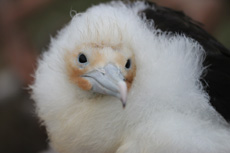 |
|
Frigate chick |
It is interesting that religion’s counterpoint, science, has no such concept. If we had to define it, a scientific pilgrimage may be a tomb of a scientist who made a noteworthy contribution to science, or a place associated with a scientific concept that substantially changed our perception of the world. If these were the criteria, the Galapagos Islands in Ecuador would surely qualify. This is the habitat of the famous Darwin’s finches and Giant tortoises, which played a central role in Darwin’s widely publicized book “On the Origin of Species“, in which the theory of natural selection proposed a scientific alternative to the question of our origin; till then mainly in the realm of religion and philosophy.
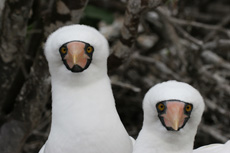 |
|
Nazca couple |
As soon as one steps onto the islands, we are reminded of Darwin’s heritage. The Charles Darwin research center is trying to combat and counteract the effects of human habitation of the Galapagos and return the islands to their pristine state. Birds, islands, volcanoes, lakes, are named after the erstwhile scientist that made Galapagos so famous.
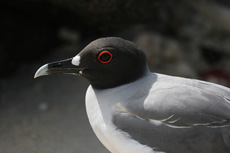 |
|
Swift winged gull |
And it was no less evident than on Isabela II, the cruise ship that was our home for five days. Mostly isolated from habitation, we cruised around from island to island where the only residents were species often endemic to one particular island. With their constantly changing landscape, lack of sweet water and rough growing conditions, each island seemed like a laboratory for natural selection. We saw unique features on each island, where volcanoes form a dramatic backdrop to red, green, black, white and green beaches. Blue footed boobies nested only on North Seymour, whereas Nazca boobies picked Genovesa. We saw saddle backed tortoises from dry Santiago Island and giant tortoises with dome shaped shells from the highlands of Santa Cruz and Isabela. Flightless cormorants could be seen only in the Fernandina area. And of course, everywhere, Darwin’s finches, with their highly specialized beaks, some for crushing seeds, some for feeding on insects on iguanas, some for feeding on the endemic Opuntia cactus.
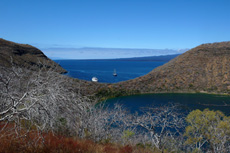 |
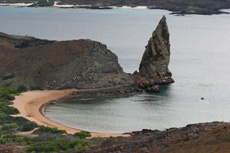 |
|
Darwin Lake |
Pinnacle Rock |
Of all the places we have visited so far, Galapagos has been my favorite, not just for its incredible natural beauty or its animal life, but also because of its importance to science. Like Saint Peter’s in Rome, the Galapagos Archipelago is a hallowed place, a large open-air cathedral dedicated to science. I feel that I have completed a pilgrimage.
Very cute birds!
I love this picture of you both! You look like you’re having the greatest time.
I agree with Ada! Nina Have been carrying your closet with you? All those nice clothes!
As always the pictures of beautiful. Did your get your camera fixed?
Hello Shanta Auntie,
Thanks! No, we do not have the lens fixed, Aai/Daddy are bringing us a new one!
Neena
Had breakfast with your folks, Shreesh. Wonderful stop in Minneapolis. Apparently people live in Minnesota on purpose!